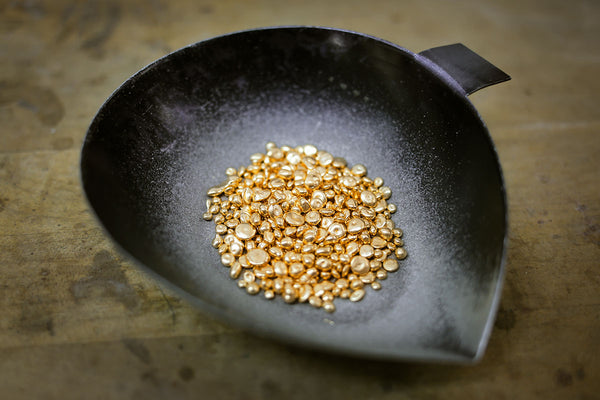Lost Wax Casting
Each piece of George Rings jewelry is created in our Pacific NW studio using the lost wax casting method — a metal-forming technique over 6,000 years old.
Lost wax casting is accomplished through melting gold casting grains at high temperatures and allowing the molten gold to flow into negative space created from the "lost wax."

Each time we cast a piece, a corresponding vulcanized rubber mold is shot with wax and peeled apart to reveal the shape that will eventually be the finished gold piece.
The wax version of the finished piece is then attached to a wax sprue to create a casting tree. A casting flask containing the tree is then filled with creamy liquid plaster ("investment"), shaken on a centrifugal surface to remove air bubbles, and then allowed to rest and dry for several hours.
Once the investment is dry, the flask is placed inside a kiln overnight to allow the wax to slowly burn out. The negative space that remains creates the path for the molten gold to flow.
Gold casting grains are poured into an intensely hot furnace to melt and then flow into the flask.
Once the molten gold has filled the space within the flask, the flask is removed from the heat and quenched in water. When the newly formed gold pieces are retrieved from the flask, they are matte black due to oxidation of the alloys.
After a soft massage to remove the remaining plaster and a bath in a lightly acidic and salty pickling solution, the oxidation disappears to reveal a gorgeous matte gold.
The sprue and “button” of gold are clipped from the piece, and finish work begins
Depending on its shape, a piece may be placed in a pin tumbler — a gentle, microscopic polisher — to remove any remaining oxidation from tiny crevices.
Final polish work involves at least 12 stages — a skillful back and forth between wheels of varying shape and grit. The timeworn softness of our jewelry depends upon the careful work at this phase of the maker process.













